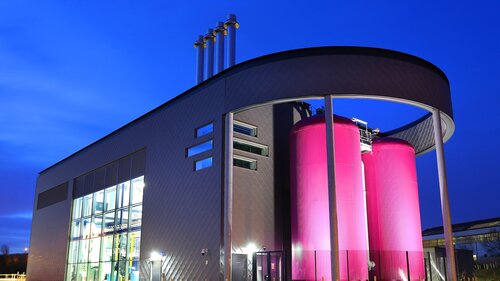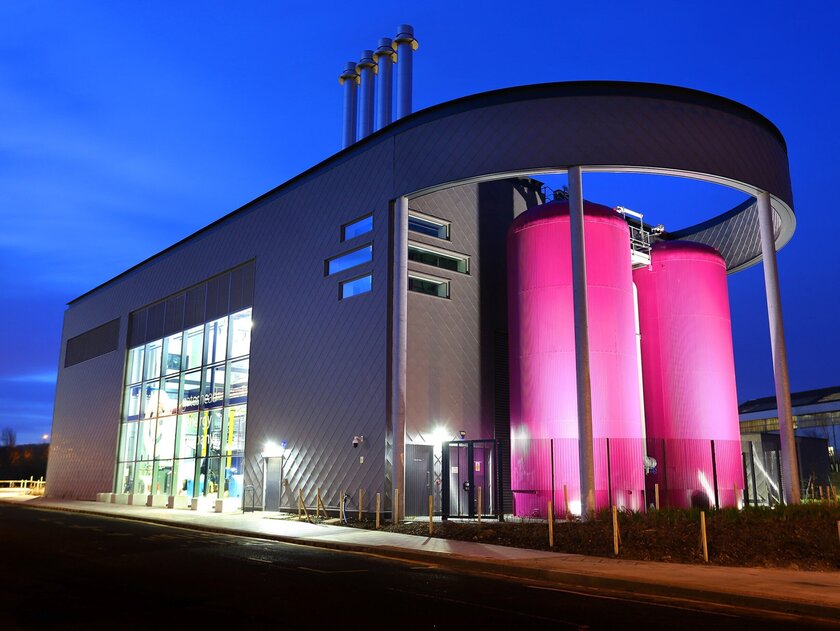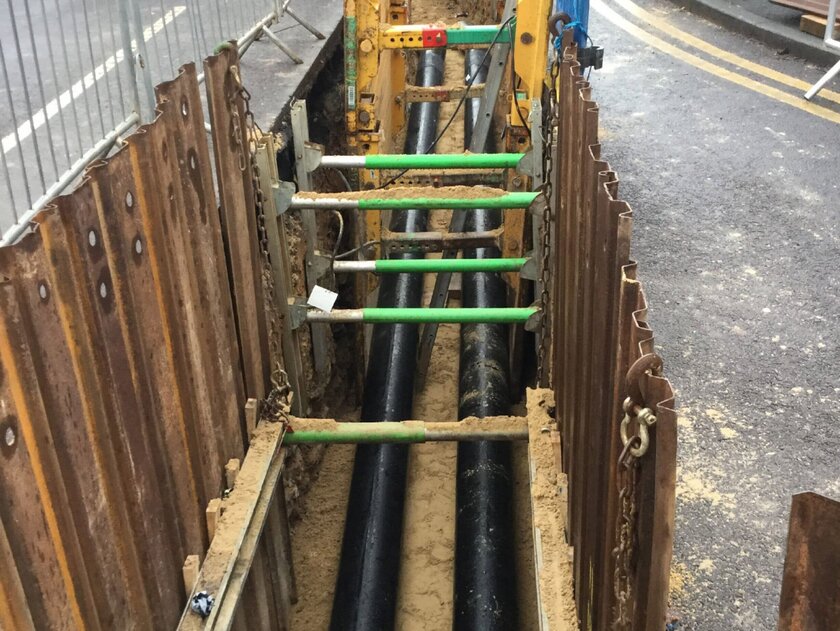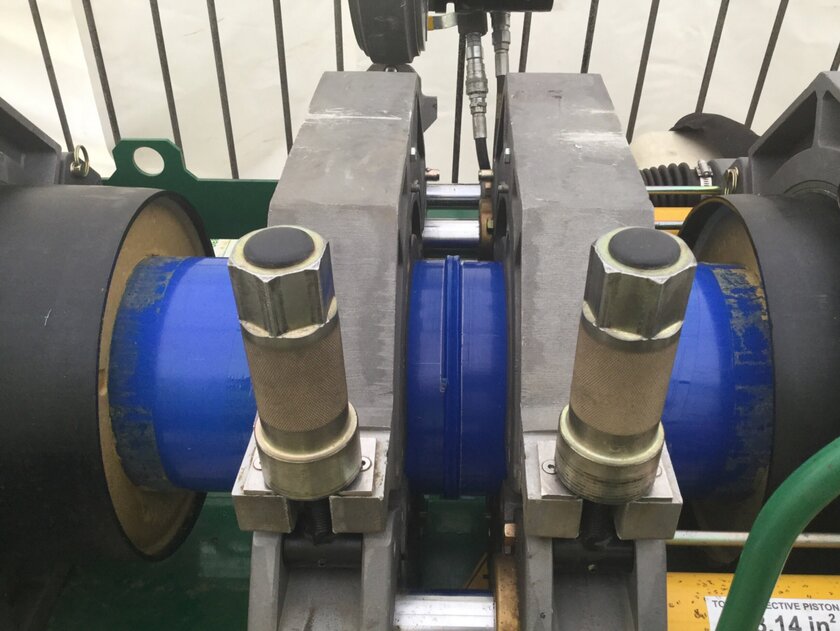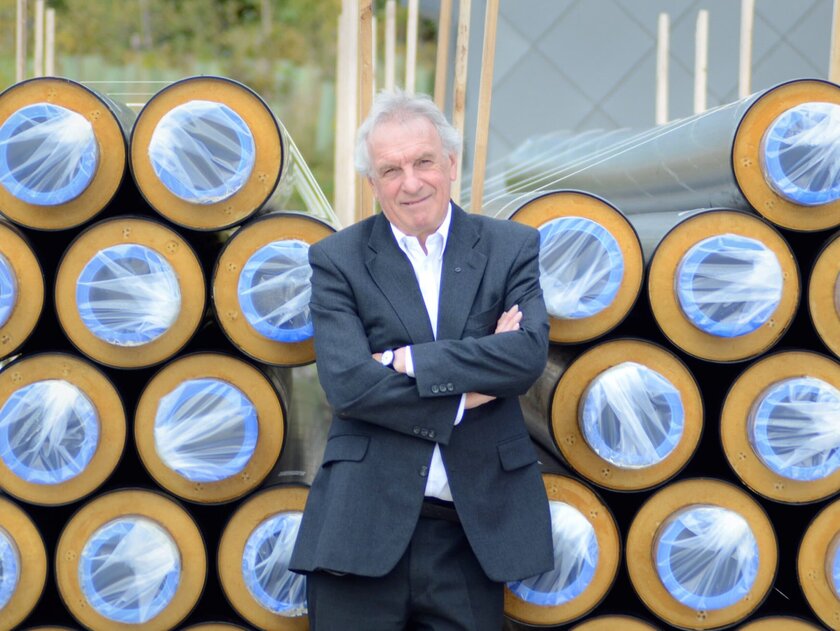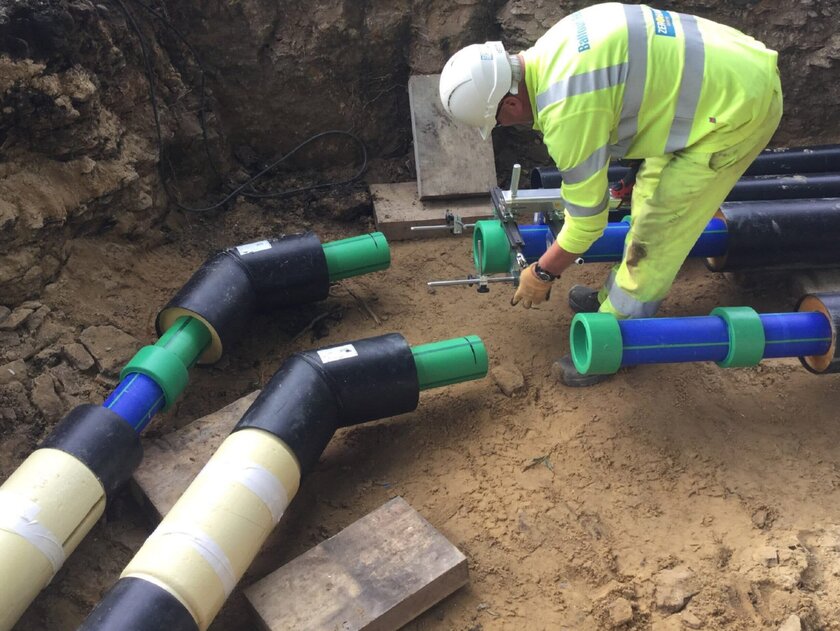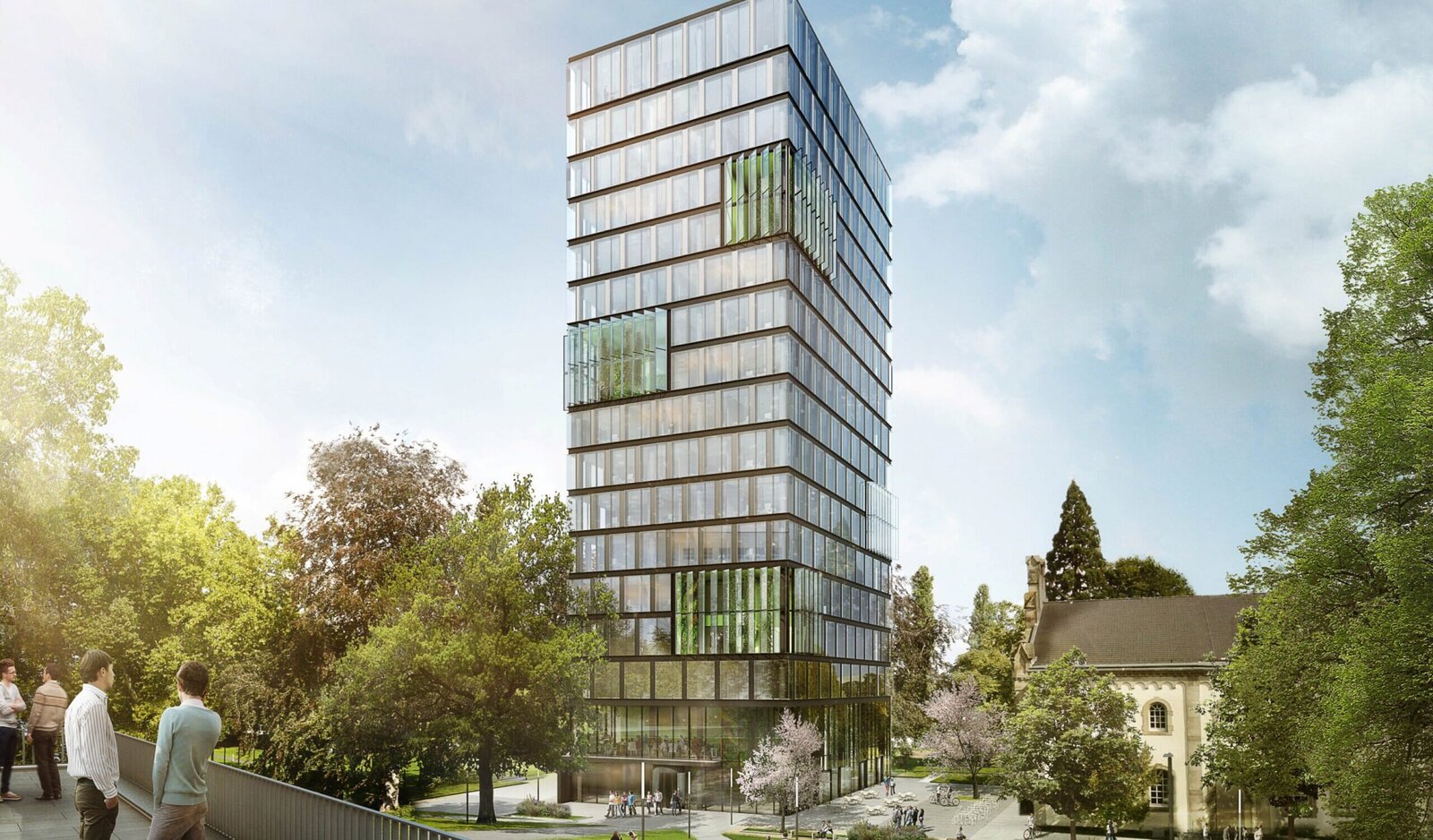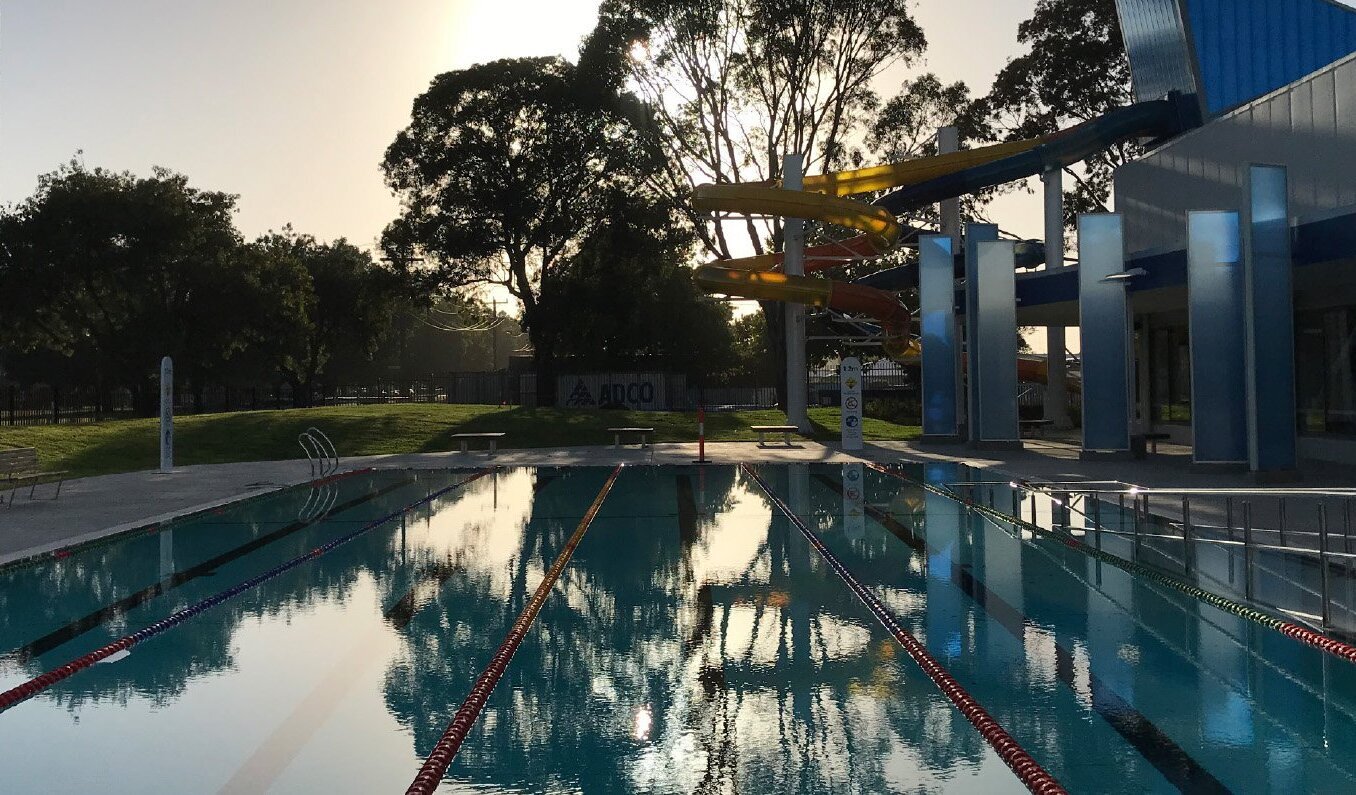Working area of just 80 metres for large-scale project Permissions minimized thanks to aquatherm – Gateshead is a town in Tyne and Wear, in the north east of England. The town has a population of around 202,419 and is known for its architecture, including the Sage Gateshead, the Angel of the North and the Baltic Centre for Contemporary Art. In 2017, a ground-breaking energy scheme that would cut energy bills and carbon emissions for homes and businesses in Gateshead was launched by Jesse Norman, the Minister for Industry and Energy.
The new, low carbon energy centre generates both heat and power for sale directly to customers via a new 3 km underground network of heating pipes and high voltage ‘private-wire’ electricity cables. Unlike conventional power stations, Gateshead’s District Energy Centre is capable of capturing up to 85 % of the waste heat created during the energy generation process and this can then be fed directly to public buildings, businesses and people’s homes. The Energy Centre utilises a pair of 2MW gas-powered combined heat and power (CHP) plants to generate enough electricity to power 5,000 homes, with the waste heat from the engines being recovered to provide hot water for heating. In conventional power stations, this waste heat is simply lost to the atmosphere.
The Gateshead District Heating Network is not only innovative but it has also provided a lot of comparative data as steel pipework was chosen for the initial system, whereas the extension was installed with aquatherm blue pipe ti (Thermally Insulated). The working area for the steel pipework was required to be up to 250 metres at any one time. This increased costs and created a far greater health and safety risk. There were also vast implications on public transport as well as on local residents and businesses. The trench depth was required to be over 1.2 metres deep, creating a challenging working environment and the requirement for extra shoring, thus reducing the speed of safe working. At approximately 2 hours to weld a DN 200 Schedule 20 joint, the lengthy jointing process of the steel pipe did not help matters as the trench was required to be open for longer. A big challenge that engineering firms are currently facing is the scarcity of welders. The average age of welders in this country has now eclipsed 55 and there are no signs of the decline ceasing.
Labour Savings
The jointing procedure for aquatherm pipework is considerably much quicker than welding the steel equivalent. A DN 200 joint on aquatherm pipe takes in the region of 8 mins to heat and 43 mins to fuse and cool. A DN 200 joint on aquatherm pipe takes in the region of 8 mins to heat and 43 mins to fuse and cool.
That’s 51 minutes to connect 2 lengths of DN200 pipe. (23.2 metres). This acceleration presented that there were large labour savings to be made on installation which contributed to making the whole project more viable. To aid with the speed of installation, the transportation of aquatherm pipework is much easier compared to steel alternatives. the transportation of aquatherm pipework is much easier compared to steel alternatives. Manual handling was less of an issue, in fact the installer was able to use gangs of just 1 or 2 men rather than 3 or more men for the steel pipe installation.
1 metre of DN200 steel pipe = 42.5 kg
1 metre of DN200 aquatherm pipe = 16.5 kg
The availability of aquatherm fittings also played a big part with assisting the installation speed, as the steel sections that would typically be fabricated on site could be pre-fabricated with aquatherm, allowing for quicker deviations from plans, should some unexpected services be in the proposed route. aquatherm’s flexibility and weight also made it easier for the installer to navigate around existing services. When trying to reduce the impact on the local community, another benefit of aquatherm TI is the absence of expansion allowances.
Steel requires extra bends and additional pipe to absorb any expansion resulting from heat changes in the system. As a result of the aquatherm energy being buried, expansion provisons are not necessary because the wall thickness absorbs all of the expansion. Once again this creates a vast reduction on costs with less material, less labour and trench works required, limiting the impact on locals residents & businesses.
Running Costs
Due to the roughness of the steel pipe and the build-up of scale internally, the steel system will require higher power costs for pumping than a PP-R system. As the system gets older, the scale and the roughness will increase, thereby increasing the costs even further for a steel system. For example, when compared to steel, aquatherm pipe could give a saving of 15 % on power costs. The thermal efficiency of aquatherm pipe is also far superior to that of the Steel pipe.
aquatherm = 0.15W/mk
Steel = 54 W/mk
The 1.3 km Gateshead District Heating Extension was an overwhelming success. The system went fully live in 2018 with the system running at 81 °C flow in the winter and approx. 5 °C less in Summer. By using aquatherm pipework rather than steel, Gateshead Council made an estimated cost saving of around £400 per metre. his is based solely on the design and installation cost of the aquatherm/ steel pipe and is not inclusive of cost savings that will occur from when the system went live. The primary costs associated with a District Heat network are the capital and running costs.
“Innovation is key in bringing cost effective solutions to new and growing markets. Extending the district heating network in Gateshead using new PP pipe at a greater diameter than used in the UK to date has been a great opportunity to build on our culture of innovation.“ Installer, Balfour Beatty: “Using aquatherm PP-R avoids the requirements for expansion loops as the pipe is self-compensating. This reduces site time significantly and minimises the need for extensive traffic management and improves the customer experience of the installation works”.
